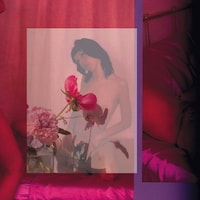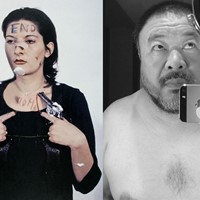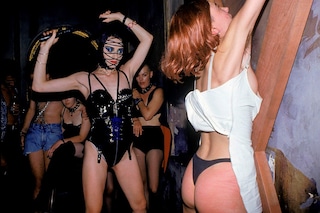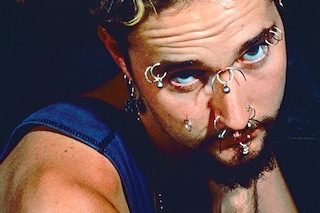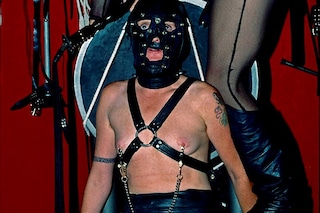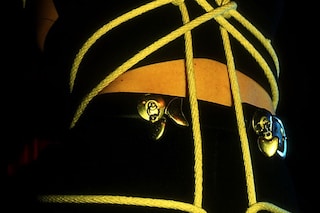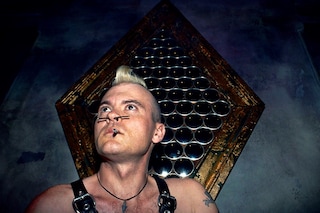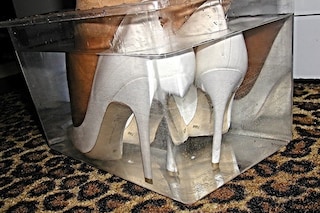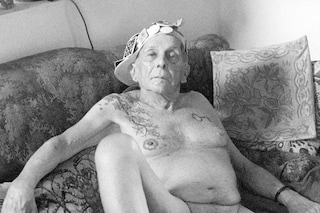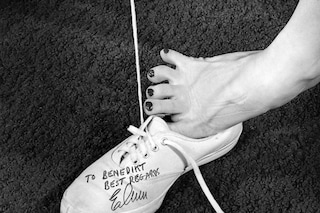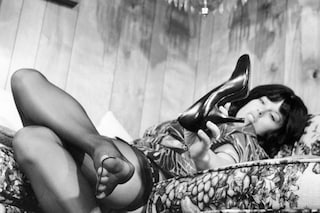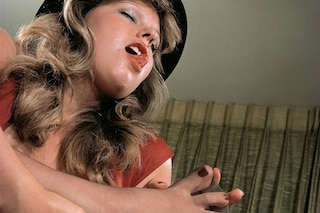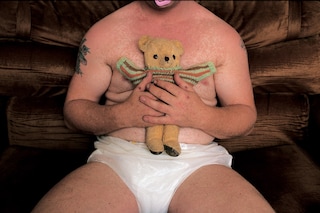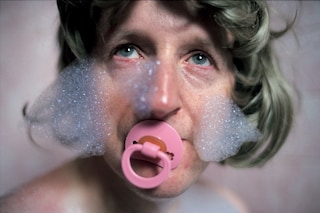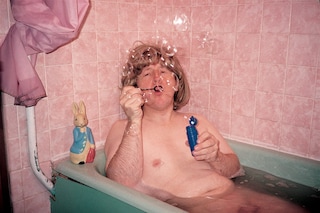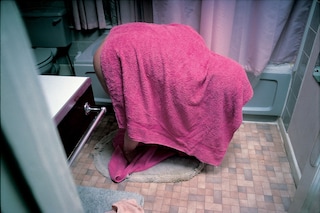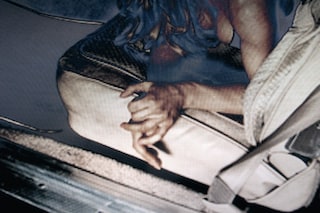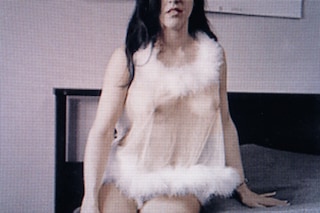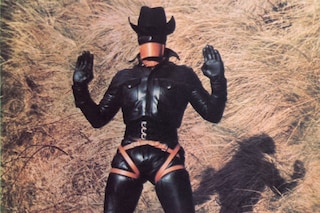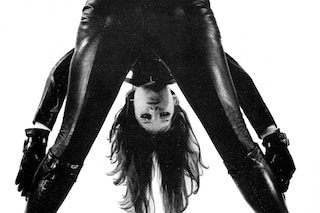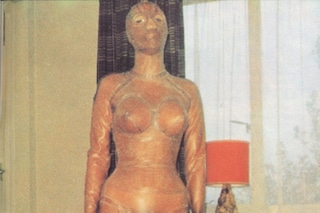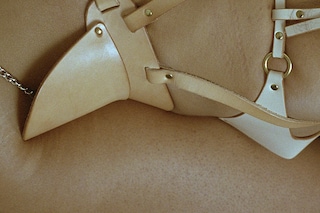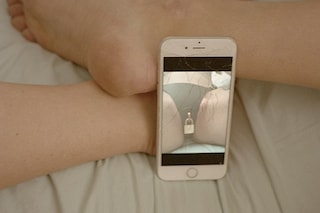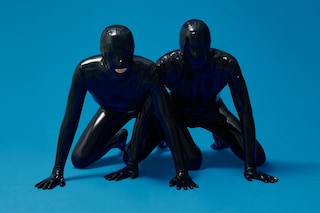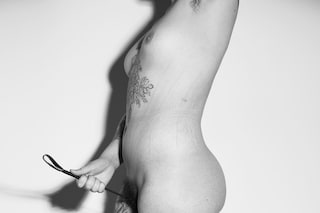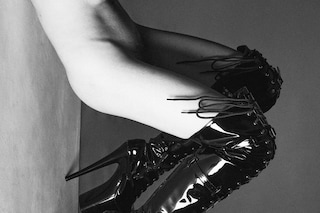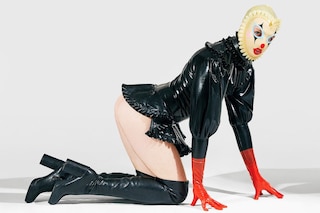We delved deep into the Dazed archives for projects which capture the radical sexual practice
People have always had an affinity for fetishism, long before we had iPhones, latex dresses and spiky high heels. In ancient cultures, the word fetish meant “inanimate object worshipped for its supposed magical powers”. In the 20th century, it evolved to mean a form of sexual desire strongly linked to a particular object, which was pathologised, stigmatised and ultimately rejected by society. Fetishism was a dirty secret concealed behind closed doors - and through revolting the conformists, it has naturally attracted artistic outlaws and rebels of all kinds.
Since the 1970s, visual iconography of fetish has permeated contemporary art, fashion and pop culture: from rubber outfits in Vivienne Westwood’s SEX boutique to killer heels to Helmut Newton’s photographs to the art world disruptors like Bob Flanagan, Tom of Finland, or Reba Maybury (drop by Hardcore exhibition at London’s Sadie Coles for a punchy take on transgressive sexuality today). For a long time, the artistic realm of fetishism was dominated by the male gaze, but in the 21st century, diverse visions and desires are coming to the surface, alongside the testaments to its queer history and links to the leather community.
The stories we have chosen from the Dazed Digital archive are not about fetish as an aesthetic – each of them explores the depth of the actual practice, the nuanced human sexuality, the history at play, and the communities which gravitate towards highly-eroticised objects and spaces. They offer an opportunity to shake off prudence and prejudice – and fearlessly interrogate your own desire.
In 1993, photographer Ilana Rose first walked into Hellfire, Melbourne’s fetish nightclub, and was immediately mesmerised by the crowd. “We got in and everyone was totally dressed – that’s the first thing we noticed. It was just the most amazing take on S&M fashion, so heaps of plastic, vinyl, lots of leather and studs and everyone strutting their stuff. The music was pumping and everything was great,” she remembers.
Hellfire first opened in 1992 and was a fixture of Melbourne’s 90s nightlife every single Sunday night for ten years. It was a space of sexual liberation and experimentation which attracted party-goers, fetishists and kinksters alike. Rose documented all of them on the dancefloor and during erotic play - a unique insight into Australia’s sexual underground which existed on the verge of fetishism and club subcultures.
Fetishes are not always linked to dungeon-like imagery and dark nightclubs - they can also be obscure and have their own self-contained visual language. Reba Maybury, artist, dominatrix and the founder of Wet Satin Press, explored the private desires of men on the Internet through a series of zines published in 2015. It was the foray into something so completely removed from what’s perceived as sexy, yet still seriously erotic, that inspired Reba to interview each man and document each fetish. Each interview with an anonymous man reveals a very personal desire: A man’s fetish for women wearing office-appropriate heels submerged into water, A 60-year-old man’s ritualistic fetish for wearing nylon on his face at home, and A man’s fetish for the air bubbles trapped inside women’s dresses while swimming.
“The reason we wanted to publish these into print was because their imagery is so outstandingly original,” says Maybury. “Their creation and existence verge on the boundaries of folk art rather than that of the volume of commercially sensational pornography that we are now so numbed to. All gendered and sexual stereotypes disappear and we’re left with a utopian vision of harmless but fascinating eroticism which makes us question ourselves.”
London-based Sensored magazine emerged as a push back against online censorship of sexuality and the body. Photographer Tom Selmon started the project in the lockdown, seeking to regain agency which he felt was taken away in the online spaces - and create a platform for other erotic creators to express themselves freely. “It’s an ode to the beauty of the erotic. It has no boundaries or limitations with the bodies we show and how explicitly we show them,” he says. “It features contributors from around the world, all giving their own unique, uncensored, and personal interpretation of sex and nudity, acting as a time capsule of artistic expression within erotica today.” Sensored also emphasises the connection between sexuality and selfhood, especially for those practicing fetishism and the queer leather communities.
While fetishism is often focused on objects, it also expands the realm of which parts of the body we are culturally allowed to eroticise. Foot fetish, which is often dubbed the most common of all, was a strict taboo for the most of the 20th century. American photographer Elmer Batters was one of the disruptors who approached it artistically, creating erotic imagery which suited his sexual calling. Batters's journey wasn’t easy: bubbed ‘dangerously perverse’ by the legal system, the photographer was arrested for publishing his fetish mags Man’s favorite Pastime and Black Silk Stockings. Even though the magazines were focusing on legs and feet, as opposed to what is traditionally understood as nudity, it was his exploratory erotic gaze which has set off the alarms of the establishment. Batters’s work has since been exhibited and recognised for its artistic merit.
British photographer Polly Borland has always specialised in the offbeat, surreal and fringe. So when she heard about a secret club in which adult men spent weeks looking and living like babies, she first could hardly believe it – but then set out to document it. She photographed Hush-a-Bye-Baby Club in Gillingham, Kent, a sanctuary for those who wanted to explore adult baby play. Her book, The Babies, was published in 2001 by powerHouse Books, featuring 80 photographs taken over a five-year stretch, a foreword from Susan Sontag and the same unflinching gaze from Borland’s lens. As opposed to the articles and ‘documentaries’ that might have introduced contemporary audiences to the phenomenon, Borland’s images transcend any kind of ulterior narrative or judgement – a much-needed humanising perspective on the fringe fetish.
For her book Jaunt, German photographer Lotte Reimann used found imagery from a personal erotic archive to construct a raw and emotive fictional narrative. She combined nude self-portraits with desert landscapes and car crashes - channeling her own sexual fantasies into it. “It’s a photographic 'jaunt' through lust in age, that is neither linked to a specifically feminine or masculine desire, but to eroticism as an interpersonal phenomenon,” she explains.Taking close up shots of her computer screen, she rewrote the couple's story with inspiration from J. G. Ballard’s novel Crash. “For me, personally, it's not just the crash I relate to sexuality, but the car itself. Metal, steel, glass, leather, plastic, oil, and dirt – all agglomerated into one piece, which encloses me – blasting with tremendous speed through the landscape, is hugely exciting, arousing.”
The history of latex fetish is closely connected to the name of John Sutcliffe, a former aircraft engineer who took on making rubber and leather motorcycle gear in 1957. For three subsequent decades, he has designed clothes for leather, rubber and PVC fetishists, with an emphasis on catsuits, cloaks, and gasmasks. In 1972, he founded AtomAge magazine in his London headquarters. AtomAge featured illustrations, bondage and rubber themed erotica and photography – both professional and amateur. Sutcliffe ran a number of successful publishing project which essentially shaped the look of latex and rubber fashion at the time - and influenced generations of designers and image-makers to come. Even though AtomAge headquarters were raided by the police and his output shun by many as obscene, Sutcliffe has left a remarkable tracein the history of fetish.
In 2020, artist Ekaterina Bazhenova-Yamasaki and Resha Sharma of London-based leather brand Fleet Ilya joined forces to redefine the existing conventions of the erotic and fetish imagery. In their book Atom, we see four ‘heroines’ (and the artist herself) wearing pieces by Fleet Ilya, including harnesses, corsets, leather lingerie, and collars, in their private spaces. Juxtaposed with still life images and shots of nature, the result is intimate, tender, and immersive, and goes against the stereotypical idea of the female body and objects usually associated with fetish culture. Atom is a continuation of Bazhenova-Yamasaki’s artistic practice exploring desire, the body, and finding agency in one’s sexual expression - and Fleet Ilya’s quest to reframe fetish as a tactile and embodied practice.
Matt Ford’s long-term photo and video project VOYEUR, which he exhibited in London in 2022, is an ode to real people making the city’s kink scene. “One of my initial goals was to go behind the trashy headlines and discover the real human aspect of the kink scene,” Ford told Dazed. “I wanted to celebrate the community, and also show people outside it that just because your [expression of] sexuality is different, it doesn’t mean you’re doing anything wrong.” From pro-dommes to rubber puppies, inflatables enthusiasts and content creators, it is an evocative and earners portrait of the community.
Join Dazed Club and be part of our world! You get exclusive access to events, parties, festivals and our editors, as well as a free subscription to Dazed for a year. Join for £5/month today.


